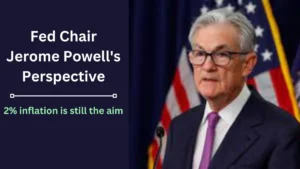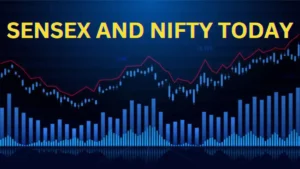The Sensex and the Nifty, two of India’s major stock indices, reached new all-time highs on Friday. The Sensex gained 320 points (0.47%), closing at 67,838.63. Another benchmark, the Nifty, increased 89 points (0.44%) to settle at 20,192.35.
Key Takeaways
- Reasons Behind the Surge in Sensex and Nifty
- Crude Oil Price Surge
- US Stock Market Resilience
- Caution Next Week
Weekly Gains of Sensex and Nifty
- Sensex Record High: 67,927.23
- Nifty 50 Record High: 20,222.45
The BSE Sensex and Nifty 50 finished the week with significant gains and closed at record highs. Both the indices gained by about 2% each on a weekly closing basis. The total market value of companies listed on the BSE (Bombay Stock Exchange) grew noticeably in a single session, jumping from roughly 322.2 lakh crore to over 323.4 lakh crore. This translates into gains for investors of around 1.2 lakh crore.
Despite worries about rising crude oil prices, both indices closed the week at record highs. This demonstrates the Indian stock market’s incredible resiliency and upward direction.

What’s Behind the Surge in Sensex and Nifty?
Several global factors contributed to the surge in the Indian stock market:
- Positive US Market: Despite rising crude oil prices, the 1% gain in the US stock market substantially increased investors’ confidence.
- China’s Economic Signals: Chinese retail sales and industrial output for August outperformed experts’ predictions, according to recent data. It shows that China’s economy is beginning to revive.
- Easing Global Inflation Boosts Confidence: Recent inflation data indicate that inflation is gradually declining in several areas. Investors therefore think that the FED may decide to postpone its rate hike at its meeting next week.
- End of the Rate Hike Cycle: In order to fight inflation, central banks all over the world have carefully raised interest rates. The European Central Bank (ECB) increased its benchmark interest rate to 4% on Thursday. The general assumption, though, is that this period of rate increases may soon come to an end.
Crude Oil Prices on the Rise
The price of crude oil has been rising, and there are no signs that this trend will change. Brent Oil is trading close to the $94 per barrel level as of the most recent data. Brent oil has increased for three weeks in a row, now costing more than $93 a barrel. This increasing momentum is fueled by a number of things.
Factors Driving the Crude Oil Surge
There are following key factors which are responsible for the surge in crude oil prices:
- Supply Constraints: Supply restraints have been implemented by major oil-producing countries like Saudi Arabia and Russia, which have tightened the world oil market.
- Deficit Warnings: Both the International Energy Agency (IEA) and the Organization of the Petroleum Exporting Countries (OPEC) have warned of market deficits expected to persist through the end of the year.
- Demand Resilience: Despite difficulties in the global economy, there are hints that the US may avoid a recession. Recent statistics from China also came in above experts’ expectations, suggesting that the current economic crisis may be coming to an end.
- Fuel Price Surge: Fuel costs are rising as a result of the tightening oil market, with diesel reaching record highs in New York.
- Oil Price Predictions: Oil could hit the $100 per barrel threshold, according to many analysts, who are confident in the current upward trajectory.
US Stock Market’s Resilience
The US stock market has shown amazing resiliency, remaining strong this week despite increases in the dollar index, the 10-year bond rate, and energy costs. What you need to know is as follows:
- Stock Performance: On Thursday, the major US stock indices performed well. The S&P 500 gained 0.8%, the Dow Jones Industrial Average rose by nearly 1%, and the Nasdaq Composite added around 0.8%.
- Consumer Resilience: Despite concerns about rising interest rates, US consumers have remained resilient. Retail sales for August exceeded expectations, growing by 0.6% month-on-month.
- Inflation Trends: While inflation remains persistent, there are indications that it might be stabilizing. The Producer Price Index increased by 0.7% in August, up from 0.4% the previous month. However, “core” wholesale inflation showed a slight decline, standing at 2.2% compared to July’s 2.4%.
Caution Next Week
Despite the fact that Indian benchmark indices S&P BSE Sensex and Nifty 50 concluded the week at record highs, the recent selloff in midcaps and smallcap equities caused investors to adopt a cautious stance. Additionally, the absence of active buying by FIIs and DIIs is currently a cause for concern when the market is at all time high.
Along with rising crude oil prices, the US dollar index near 105 and the USD/INR rate above 83 can further dampen Indian investors’ enthusiasm. The yield on US 10-year bonds is also still steady at above 4.3. Traders should exercise caution in the Indian market the next week in addition to the truncated week.





cheers
thanks, bro…